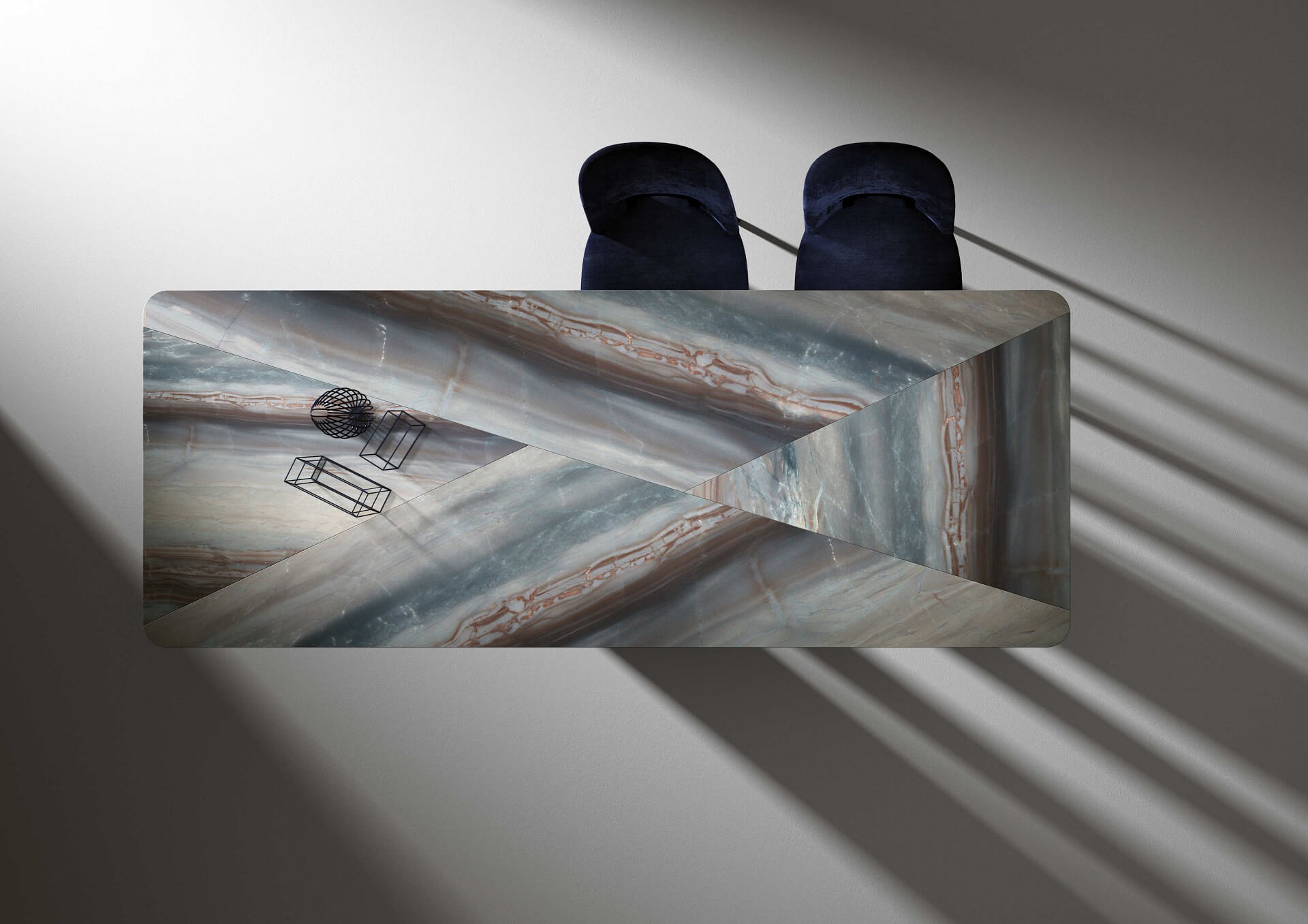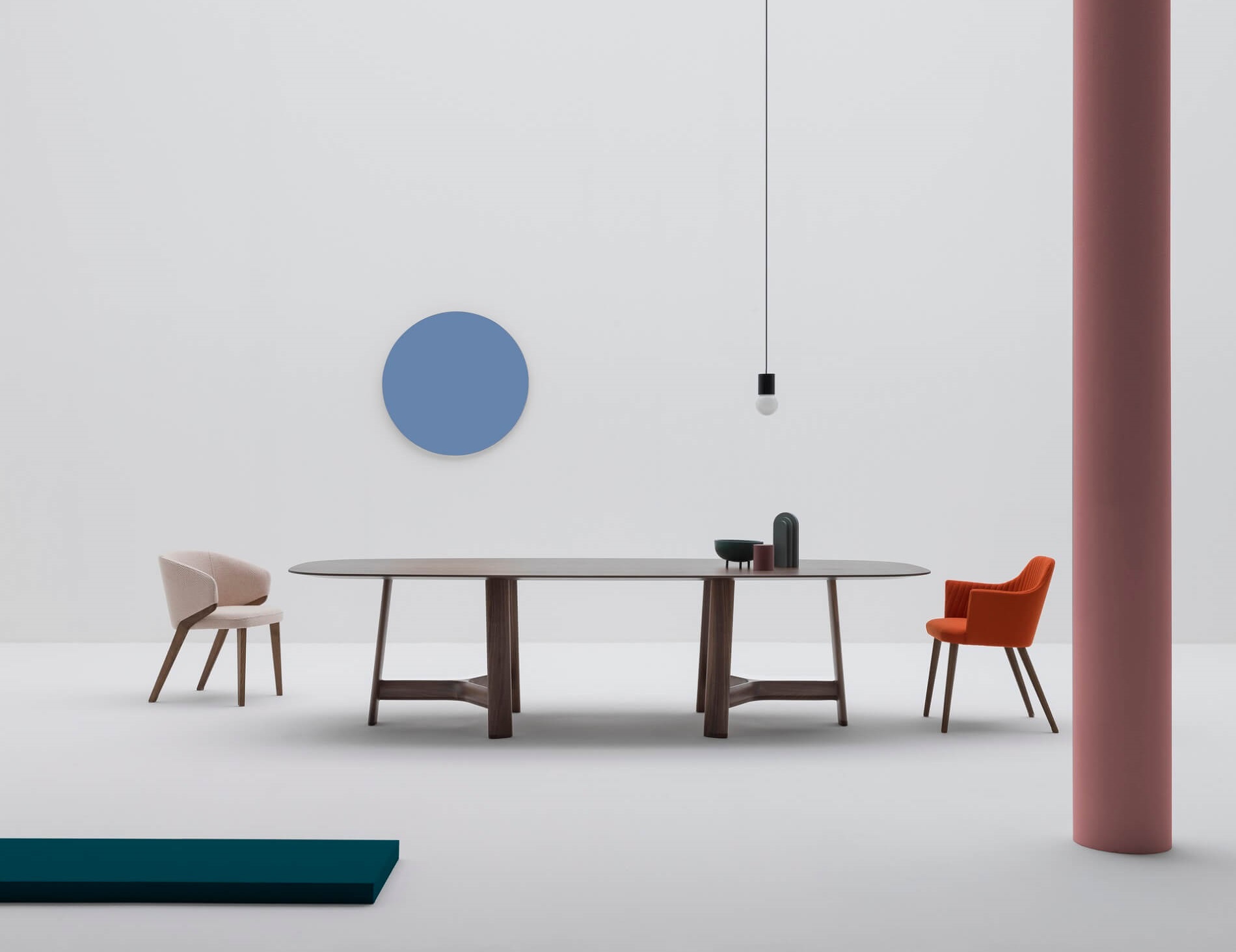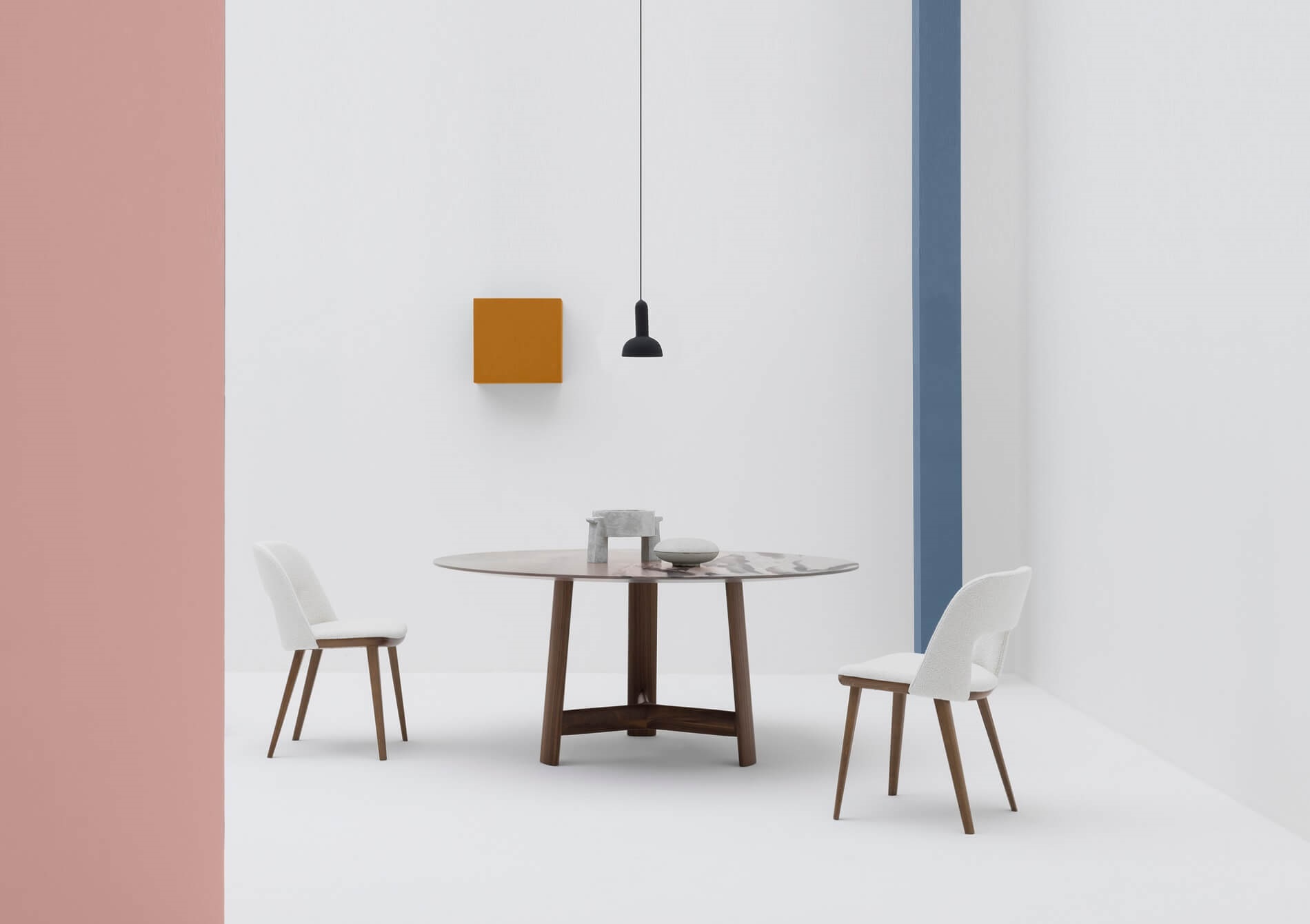The centerpiece of conviviality, important elements in terms of aesthetics and space organization, tables are objects of inestimable importance in the home. Here, Cucine d’Italia showcases 10 tables with sculptural aesthetics to add a touch of wow.
Line-Up Matrix International
A series of tables characterized by their rectangular shape and important proportions that define their rigorous and sculptural appearance: Line-Up Matrix International.
The supporting structure made of steel is the result of the technology used, which also becomes the aesthetic protagonist of Line-Up. The four portal-connected legs engage the thickness of the top with a precise 45-degree cut. The top made of layered technical material with double aluminum foil guarantees high performance up to dimensions of 300 cm.
High characteristics of scratch resistance and resistance to high temperatures make Line-Up able to play a leading role in both home and work spaces.
The top, available in different finishes and colors, is machined and bevel laminated and remains overhanging the supporting structure, thus giving an aerial look to the design.
Baobab Roberto Cavalli Home Interiors
Protagonist of the dining environment of Roberto Cavalli Home Interiors is the Baobab table that, with its original design inspired by the typical African tree, takes us to the heart of the savannah. The top, composed of five irregularly shaped marble elements, recalls the foliage of the plant, while the base composed of calendered cylindrical-section iron tubing recalls its stem. A sculptural table for a dramatic dining room.
Roberto Cavalli Home Interiors
Mediana L’Ottocento
The Mediana table by L’Ottocento is distinguished by its elliptical top and base in open-pore lacquered black oak and is accompanied by the Ottavia chair, in the coordinating shade, distinguished by a curved backrest and made entirely of solid black open-pore lacquered beech wood with a comfortable seat in black hammered leather, which can be customized by choosing other colors and fabrics.
Poe Laurameroni
The Poe table, designed by Bartoli Design for Laurameroni, is a refined model, contemporary in its elegance and personality, capable of reflecting the designers’ stylistic signature and the soul of the brand itself.
The Poe table system is defined by tops with rounded edges and inlays – in marble, smooth wood or glossy lacquer – and by legs with an ovoid section in smooth wood, glossy lacquer or lacquer with metallic varnish or even covered with handcrafted inlay in black rye straw.
Two elements, top and legs, both characterizing and unique to the project, in aesthetic and formal balance with each other. Visually light supports even on large tables, the legs have an elemental, tapered shape that allows multiple configurations, to support circular, oval, rectangular, square tops and even custom or custom-designed tops.
Ottanta Ghidini 1961
Ghidini 1961 dining is dominated by the Ottanta table, designed by Lorenza Bozzoli. A dining table with a large rectangular top made of natural or dark-stained oak. The legs placed at the corners of the top are positioned at 45° with an aesthetic inspired by the 1980s of the last century. The version with a round top is in travertine marble with legs in the same material with aluminum inserts in various polished and satin manual finishes.
Soul Turri
Like music, Turri’s Soul table has a soul and it resides in the sinuous and elegant development of the central leg covered in leather. The deep and intense movement is sharply interrupted on the surface by an oblique cut that brings out the round section and gives dynamism to the structure. The slight flaring toward the ground finds its counterbalance in the narrowing of the tabletop.
The soft, rounded style defined by minimal details, typical of the Soul line, reflects the possibility of making one’s home an immersive place made of comfort and beauty.
Blevio Molteni&C
Ignazio Gardella’s iconic Blevio table, which recently became part of Molteni&C’s Heritage Collection, was designed in 1930.
It is an extraordinarily harmonious and timeless piece of furniture that has become a collective heritage today; capable of condensing in its intrinsic simplicity the purest characteristics of Gardella’s design.
Elegant and with linear geometricity, the Blevio table is rich in design, in details that reveal themselves upon close observation. It is born from a process of subtraction of the superfluous, from the perfect synthesis of form and function, from the careful and selected use of material that becomes its aesthetic feature.
A project that focuses on the essential and the abandonment of decoration as an end in itself, Blevio is original and inventive: it has a solid wood support surface in the shape of an elongated rectangle, concluded at the ends by two semicircles and supported by two solid wood elements with a hollow cylindrical section. The upper part of the vertical supports is connected to the top by two shaped wooden elements in the shape of a capital.
The refined and novel play of counter curves is also a structural stabilizing element: the geometric center of the semicircular ends of the plane coincides with that of the vertical supports. The use of curved forms responds to the need to emphasize the continuity of the surface while avoiding interruptions.
The original specimen is clad in copper, a material that is difficult to preserve in contemporary uses of dining tables: for this reason, Molteni&C’s Research and Development Center replaced the copper foil of the wooden top with a special metal powder coating that gives the same effect of solidity and handcrafted shine, while imparting greater strength. As an alternative to the varnished wood top, a top made of Breccia Capraia marble slab was designed, which fits into the aluminum profile.
River Bross
The solid wood frame, with soft profiles, is the matrix that generates the River table, signed by Marco Spatti for Bross, which evokes with its rounded lines the smoothing action of water on the material, shaped and worked to obtain an elegant and natural result.
The base – offered in Canaletto walnut or ash in multiple finishes – is composed of three vertical elements with an elliptical section and slightly inclined, joined together in the lower part by as many crosspieces with a central cross.
The structure is inscribed in a circle and is designed to be an interpretation of the traditional trestle, with joint details that enhance the company’s expertise in woodworking: it supports a round or oval top. In the latter configurations, the base is doubled and River acquires an important aesthetic, ideal for large residential projects or meeting rooms.
Finally, the top has a tapered edge to create a pleasant contrast between the concepts of lightness and solidity and is offered in various wood essences, marble or crystal.
Plateaux of Mirror De Castelli
Sculptural presence and essential minimalism are the identifying features of Plateaux of Mirror, a minimal and essential table designed by Elisa Ossino for De Castelli and composed of only three elements: the thick rectangular top rests on two large concave semi-cylinders that form its base.
The pure and monolithic lines are dictated first by functionality and technique and then by aesthetics, for a formal outcome that is the highest expression of rigor and essentiality associated with the harmony of volumes.
Atrium Cattelan Italia
Cattelan Italia’s disruptive design vision continues its aesthetic evolution with the Atrium family of tables, offered in versions with wooden or ceramic tops. Through this novel proposal with a strong sculptural character, the brand creates a family of dining tables with a majestic and intriguing allure.
What makes Atrium a unique and precious model is the base formed by two finely crafted glass plates. The smoked couture mirrored crystal is shaped using an unprecedented technique, which allows the surface to be given a three-dimensional effect, like quilting on fabric. A play of soft reflections is thus created, in which the ambient light sources reverberate.
Once again, the Cattelan Italia table becomes the protagonist of the living area, imposing a bold and elegant aesthetic that is not afraid to draw glances to itself. Thus around the dining table is built a complete range of refined furniture devoted to comfort.
The Atrium family is offered in the Atrium Wood version with a wooden top, in the many woods and shapes available, or with an Atrium Keramik and Atrium Keramik Premium ceramic top, the latter framed by a rounded edge in a hand-brushed Brushed finish.
Round versions in all finishes complete the family, also available with the scenic Premium edge or with a Ker-Wood hybrid top.



























